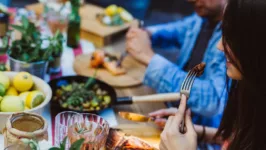We are all about seafoods. The nutritional values, coupled with how much the country’s coastline is abundant in varieties of seafoods, everyone wants a piece of it. Government agencies are putting a lot of efforts into ensuring seafood processing companies are properly inspected from time to time to ensure they adhere to established guidelines for the production. But that doesn’t mean one is out of the woods especially if one constantly consumes them.
There is also food poisoning which is common in seafoods. In New Zealand alone, death occurs between 0.1% to a whooping 12% of reported cases of food poisoning from seafoods. This occurs from the virus, toxins, parasites, bacteria, and sometimes, marine poisoning syndrome which is caused by the accumulation of toxins in seafoods like shellfishes, and so on. Although many cases of seafood poisoning are mild and can go without serious treatment, the experience can be uncomfortable or even traumatic. However, proper handling of seafoods can help avoid any of such. Here are some of the ways to prevent food poisoning from them especially of you are a traveller in New Zealand excited about tempting your tastebuds.
Buy from credible sources
Even if you are a bit thoughtless with other food items you buy, purchasing your seafoods should be done only at reputable sources. Ensure you read reviews about the place and do a lot of food safety nz research to ensure they are both certified and are spoken positively about by previous customers.
Even when you have chosen a trusted place, ensure the fish is properly refrigerated (below 40°) or at least displayed on a thick ice bed. If not, you shouldn’t buy. Once you have checked both of these, proceed to determine whether the fish only has that mild, fresh odour instead of something more disturbing. Also, look out for firmness and those that are shiny.
Pack safely
The seafood should be properly packed both while in the market and at home. Therefore, when buying, look out for those with ice crystals in their packs as they are indications that the fish had previously thawed and only recently refrozen. Even when there aren’t any, the packages should also be airtight and free of any kind of tear.
If you are shopping for your seafood alongside other condiments, put off buying your sea foods till after you are done with the rest of your shopping. Also, request that they are packed separately to avoid any kind of contamination. Generally, be mindful of anything that may have contaminated them either before or after shopping.
Eating out
If you plan ordering some seafood when dining out, take time to research the restaurant. Read reviews about it and ensure they are certified by the appropriate government bodies. Check the inspection scores of the restaurant and look around when you get there to determine if you are satisfied with their level of cleanliness. Often, a dirty restaurant will be just as unhygienic when handling your food.
No matter how small your chance of getting food poisoning from your favorite restaurant, if you are served an under cooked meal, send it back for more cooking. However, much of the toxins common in seafoods are heat stable. This means the food will still be toxic regardless of how much it is cooked. One of such is Ciguatoxin which is present in the small fishes that eat dinoflagellates (an algae-like organism that is highly toxic).
Refrigerate properly
Refrigerate seafood properly immediately after purchase. This is by wrapping it in a cellophane bag and storing in an airtight container before putting in a freezer. Both pasteurized and smoked seafoods should be strictly stored in a refrigerator set at 4°C. However, it is recommended you make use of your fresh seafoods immediately after purchase. But when properly stored, you should use it within 2 days to reduce the chances of having them contaminated.
Cook properly
Be particular about your cooking procedures especially when it comes to seafoods. If you are preparing live clams, oysters, and so on, you should take time to remove the shells totally before proceeding. In the case of fish, cook till it flakes easily with a fork. Set the cooker to a 63°Celcius.
While preparing your seafood, ensure they are kept separately and always contain them to a particular location in your kitchen (preferably the bottom shelf of your freezer). This is to avoid bacteria spreading all over your kitchen and contaminating other foodstuffs and utensils. Make it a habit to always wash your hands after touching them.
Pass on some
As tasty as they are, learn to pass on some seafoods as they are disasters waiting to happen. For instance, if you experiencing low immune system, then that isn’t a good time to be consuming some seafood such as sushi, oysters, clamps, ceviche, mussels, and scallops. The same applies to pregnant women, old persons and children. The bacteria present in shellfishes and the danger of increased exposure to mercury is why sushi is a poor choice of food for pregnant women especially. If you insist on eating sushi in a restaurant, demand to know how well cooked the shellfish in it is. But often, it is better to stay away from it entirely.
But raw shellfishes aren’t the only things pregnant women, children and old people should be wary of. Generally, any seafood which is traditionally under cooked or served “rare” should be avoided if you intend to prevent food poisoning from them. Another is salmon and other refrigerated smoked seafood.
Conclusion
The best way to prevent food poisoning from seafood is to be sure what it is you are eating. This makes preparing them at home your best options since it will allow you to guarantee its safety to a high degree. But you will also have to be able to vouch for the processing company. Therefore, choosing the right place to buy from is as good as taking time to prepare it at home. However, if you want to have some of it in a restaurant, then be sure they are of high quality.








